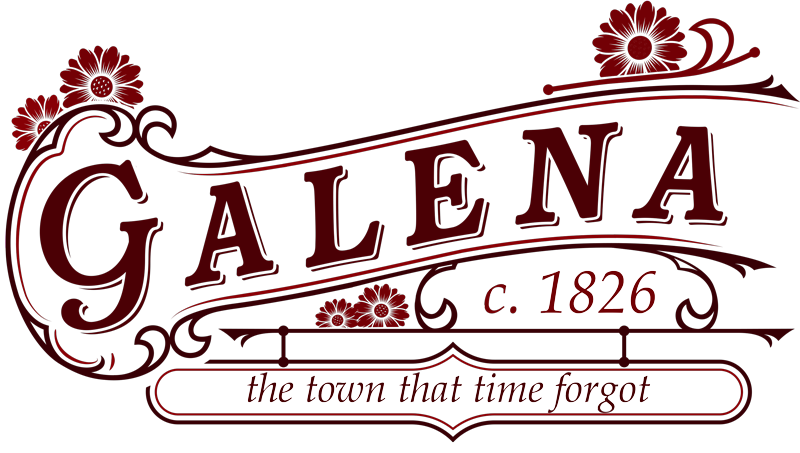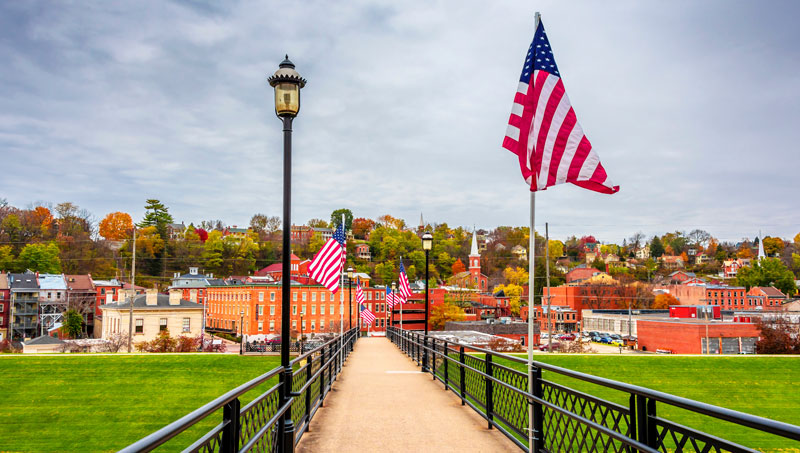American History
Galena, Illinois is located in the Northwest corner of the state, just six miles south of the Wisconsin border and three miles East of the Mississippi River. Steeped in rich history and national significance, Galena has played an important role in the history of the United States of America.

For more historic photos of Galena, go to GalenaIllinois.com
Location, Location, Location
Galena is nestled just inside the Driftless Area, which includes Southeast Wisconsin, Southwest Minnesota, Northeastern Iowa, and the very tip of Northwest Illinois. "Driftless" refers to the lack of glacial "drift" left behind after the ice ages that covered most of North America with glaciers. This region of the Upper Mississippi was spared the glaciers that flattened the Midwest, leaving a terrain of gently rolling hills covered with forests.
The result is a picturesque countryside where minerals like lead and zinc were easily found on the surface, and great rivers providing a highway for natives and early explorers.

Sac and Fox Trading Post
Julian Dubuque arrived in the area in 1788. While we don't know that he ever set foot in what is now Galena, he would write about "La Pointe" on the Fevre River, a trading post of the Sac and Fox (Meskwaki) where the Ho-Chunk, Menominee, and Potawatomi peoples would bring goods to trade with the Sac and Fox and each other.
Dubuque was granted permission to mine lead on the West bank of the Mississippi, and later from Spain, who controlled the land later sold to the US in the Louisiana Purchase. Dubuque forced the Meskwaki to mine the lead, and over time that meant digging deeper into the Earth. His masochistic tactics would lead to a revolt against the whites during which he barely escaped and fled to St. Louis, but not for long. This would be a harbinger of things to come - white settlers welcomed by the natives, becoming more numerous and more violent, and leading to repeated armed confrontations and war before the natives were removed entirely.
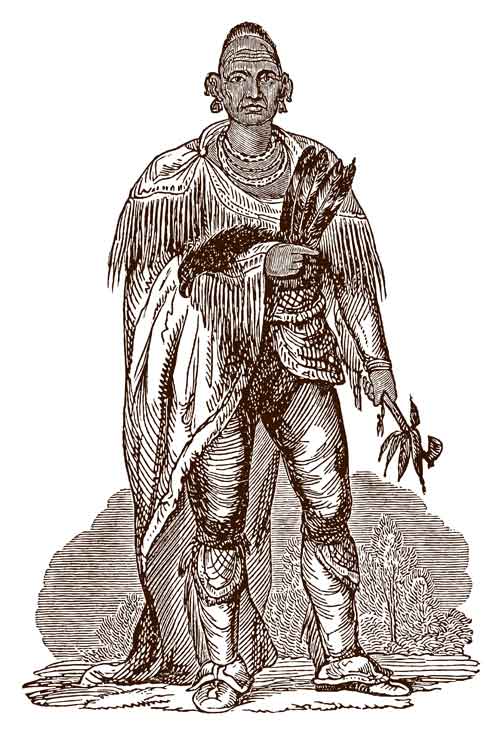
"Ma-ca-tai-me-she-kia-kiak"
Sauk Chief Black Hawk
Lead Mining
"Galena" is the title give to lead ore, and lead has been mined in Galena and traded since before 400 CE. At the time of the Louisiana Purchase in 1803, Galena was part of the Sac and Fox Nation, who mined the lead and had been trading with the French since the 17th century. The first boatload of lead left the future port of Galena in 1816, and the rush began. In 1821 Galena saw its fist permanent white settlers. In 1826 a post office was established and the name was changed to Galena. By 1828, Galena is said to have had 10,000 white inhabitants.
The mines were closed and population fell during the Winnebago War in 1827 and then again during the Blackhawk War in 1832. After the fall of Black Hawk, the town began to grow in importance, becoming the largest port on the Mississippi between St. Louis, Missouri and St. Paul, Minnesota. Galena was incorporated in 1835 and elected its first mayor in 1841. At that time, the census showed 1,900 residents.
The population surged and declined almost seasonally, and the California Gold Rush saw a lot of experienced miners leave the area with their tools to find gold out west. Nonetheless, the demand for lead was high, and immigrants poured into Galena and the surrounding area to work in the lead mines and farm the fertile landscape recently cleared of trees (more below). In the time leading up to and including the Civil War, it is estimated that as much as 80% of the world's lead came from Jo Daviess County, and most of it left the area on steamboats out of the Port of Galena. Galena flourished, hotels sprang up everywhere, and the shops were filled with the finest goods from around the world.
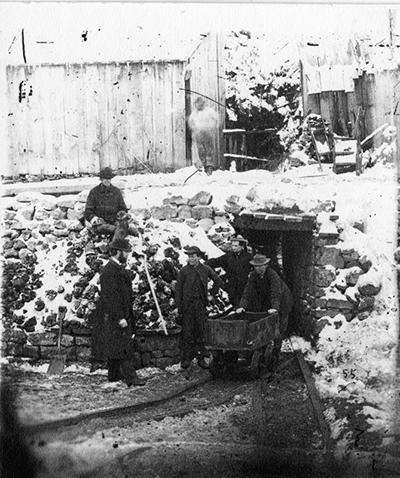
Below: Cleveland Mine, Galena, IL
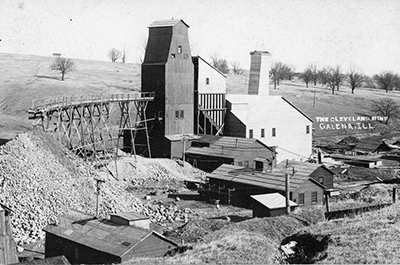
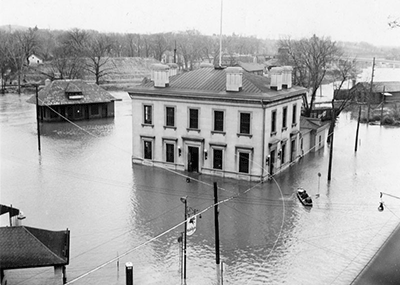
Above: Post Office
Below: Hill and Main St
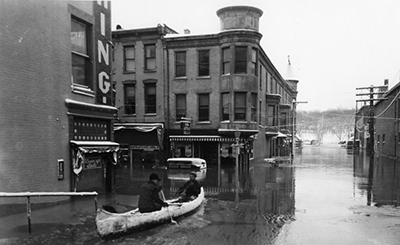
Ecological Disaster
As the population swelled and mines proliferated, the demand for timber exceeded the supply. Houses required wood to build and wood to heat and cook. Mines required timbers for support inside and buildings and elevators outside. But the most demanding of all was the smelting of lead ore and casting into "pigs" that could be easily stacked and transported. As the hills were stripped of trees and the soil plowed for crops, the topsoil began to erode. Spring thaws would move the soil gently but deliberately downstream, and the Galena River began to silt in. Once large enough to fit 8 steamboats, it began to need regular dredging to keep it navigable. A lock and dam was eventually installed, and subsequently removed - it was too little and too late. Today, the river is navigable only by shallow watercraft.
The silting of the river, and downtown Galena's proximity to it, almost destroyed its downtown. Spring floods reached epic levels in 1937, starting a cry for help that ended with the installation of the levee system and flood gates in 1950. Without this structure, Galena's downtown would be lost to history as the floods continue to this day, but the city is protected by its earthen wall and steel doors.
Famous Residents
During Galena's peak, it saw a steady stream of famous Americans live for a time or visit on their way through. Much was written about Galena, and businesses thrived. Among the famous people who visited Galena in the 19th century are Herman Melville, Samuel Clemens, Susan B Anthony, Ralph Waldo Emerson, Theodore Roosevelt, Abraham Lincoln, and Stephen Douglas.
In 1860, Galena's most famous resident debarked the steamboat Itasca with his wife and four children. He had come to Galena to help his father and brother with their successful leather store. Ulysses S. Grant and his family rented a small house on High Street in Galena, and it was there he began the most meteoric rise in world history - beginning as a junior clerk in his brother's leather store; eight years later he would learn that he had been elected President of the United States of America.
Galena was also home to eight other Civil War generals, as well as Congressman Elihu Washburne, a Washington power broker who was instrumental in Grant's military appointments and managed Grant's presidential campaign.
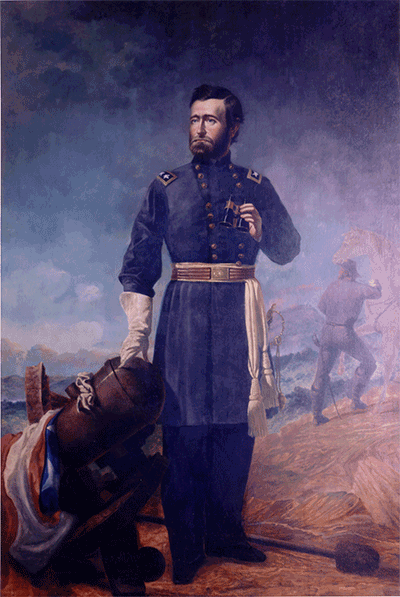
Courtesy of Galena & US Grant Museum
Decline
Railroads criss-crossed the nation during and following the Civil War, and Galena passed on the opportunity to be a railroad hub - preferring the quieter and more romantic steamboats to the noisy traffic of railroad engines. This spelled the beginning of the end for Galena's prosperity, as the silting of the river continued to make it difficult to navigate, and railroads took over as transportation of choice for people and goods. By the end of the 19th century, Galena was a shell of her former self. The population, once as high as 14,000, had dropped below 3,500. Mines stood silent and empty, businesses closed, and houses were left devoid of people - sometimes leaving all their belongings behind.

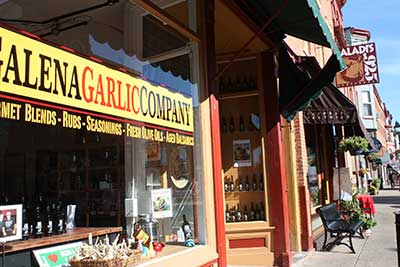
history, shopping, and just to enjoy
the peaceful tranquility of bygone days.
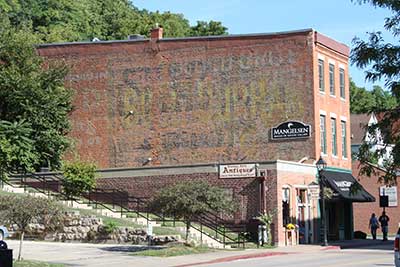
Rising Again
It is said that the lack of any prosperity in the early 20th century was modern day Galena's biggest break. When other cities and towns were experiencing "urban renewal", tearing down the old and building bigger and better - and modern - commercial districts, Galena stood silently due to lack of investors. In the 1960s the buildings began to crumble, and many were condemned and raised for public safety. Outraged at the disregard for history and preservation, a group of idealistic citizens ran for and were elected mayor and aldermen, and subsequently began adopting preservation codes. They were determined to preserve Galena, her buildings and history for future generations. Galena already attracted tourists who came to visit Grant's Home, and they were determined to give those visitor's a taste of not only Grant's history, but America's history.
During the late 1970s and through the 1980s, Galena's Main Street began it's own renewal. One by one and little by little, investors saw opportunities in the brick buildings with shops on Main Street and apartments on Bench Street. Though they were priced low, they needed a lot of TLC. By the 1990s, Galena was hosting almost 2 million visitors a year. Today, a thriving economy based on tourism fuels even more investment, more buildings being brought back to life, and more interest in history and preservation.

